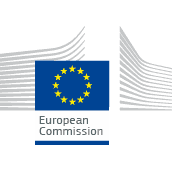
Highly efficient insulation materials with improved properties
Date de clôture : 21 janv. 2016
APPEL À PROJET CLÔTURÉ
APPEL À PROJET CLÔTURÉ
Entrepreneuriat et PME
Efficacité énergétique
Environnement
Gestion des déchets
IT
Horizon Europe
Recherche
Topic Description
Specific Challenge:The role of insulation is essential to achieve energy efficiency in renovated buildings and in nearly zero energy buildings following the requirements of the recast of the Energy Performance of Building Directive (2010/31/EU). An improved insulation in buildings will have a large impact on the reduction of energy consumption and CO2 emissions at European level. It can also bring significant environmental, economic and social benefits both for the Member States and for the citizens.
Although currently many materials are available on the market, there is a strong need to develop affordable advanced insulation materials which exceed the performance of presently used materials, and also respect strict sustainability principles.
Scope:Proposals should address the development and characterisation of new insulation materials and solutions based on nanotechnologies and/or advanced sustainable materials and offering enhanced insulation properties and environmental performance. Proposals could also consider highly effective insulation materials that respond dynamically to environmental stimuli (temperature, light, humidity, air and biological pollution, etc..)
The proposed solutions should go well beyond the state of the art and take into account the final performance properties of the new materials and of the respective building components.
The following factors should also be considered: enhanced durability for increased use duration, reduced maintenance and reduced costs; respect of sustainability principles (the sustainability of each developed solution should be evaluated via life cycle assessment studies carried out according to the International Reference Life Cycle Data System - ILCD Handbook); reduced embodied energy and minimised environmental impacts; applicability to both new build and renovation; lightweight construction and ease of installation; realistic solutions at a competitive price; limited impact on living space; improvement of indoor air quality; increased comfort and noise reduction; fully compatible with a wide set of material combinations which reflect the wide variety of building typologies across the EU; fit for deconstruction; reuse/recycling of materials at end of life. Resistance to damaging agents such as fire, moisture, rodents etc. should also be considered when relevant for the application. Standardisation aspects should be included particularly in relation with the work carried out in CEN/TC 350. Additional properties such as multi-functionality, load bearing capacity (and other mechanical properties), and use of wastes may also be considered.
Proof of concept in terms of one (or more) component(s) containing the new materials developed should be delivered within the project, excluding commercially usable prototypes (2006/C323/01), but convincingly demonstrating scalability towards industrial needs duly justifying availability of the proposed materials for potential further massive use and wide replication across Europe. Information guides for applications, installation and training on the new solutions should be provided before the end of the project.
In addition to the industrial, academic and construction stakeholders, the participation of public authorities would also be an asset for the proposals, as public authorities own a large part of the building stock at European level.
Activities are expected to focus on Technology Readiness Levels 5 to 7 and to be centred around TRL 6.
This topic is particularly suitable for SMEs.
The Commission considers that proposal requesting a contribution from the EU between EUR 3 and 6 million would allow this specific challenge to be addressed appropriately. Nonetheless, this does not preclude submission and selection of proposals requesting other amounts.
Expected Impact:Compared to state of the art materials and components, the newly developed materials should bring:
- Improvement by at least 25% of the insulation properties at component level;
- Reduction by at least 20% of the total costs compared to existing solutions;
- Improvement by at least 20 % of durability at component level;
- Respect of sustainability principles;
- Improvement in indoor air quality;
- Proof of high replication potential both in new built and renovation in Europe;
- Easier implementation;
- At least a 15% reduction of the energy spent during the whole life cycle of a building;
- Contribution to standardisation and certification activities.
Proposals should include a business case and exploitation strategy, as outlined in the Introduction to the LEIT part of this Work Programme.
To maximise their impact, the funded projects are expected to cluster with each other in order to facilitate research cohesion, integration, and advancement of the EeB-PPP agenda.
Lien officiel : Disponible pour les utilisateurs enregistrés




S'il vous plaît Se connecter pour voir cette section